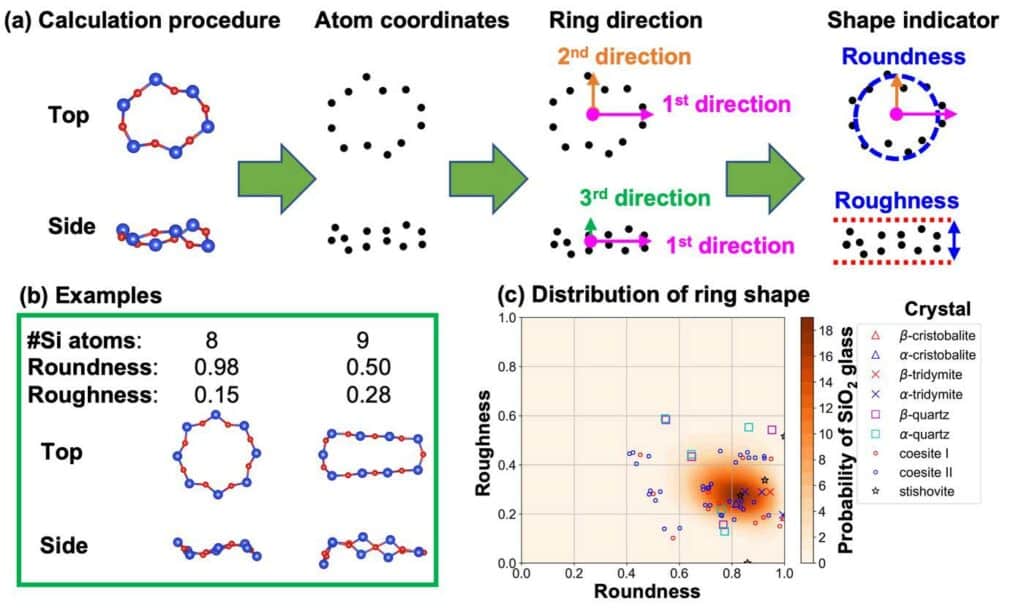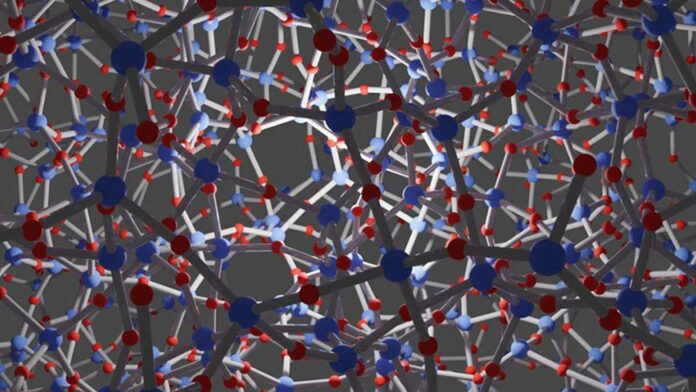Glass is a fundamental material with a disordered structure. Despite its longevity throughout the years, its atomic configuration still baffles scientists.
A group of researchers has focused on ring shapes in chemically connected glass networks to learn more about the structural regularity hidden in glassy materials. The team developed new metrics for measuring the three-dimensional structure of the rings and the structural symmetries: “roughness” and “roundness.”
These indicators help scientists to determine the exact number of representative ring shapes in crystalline and glassy silica (SiO2). They found a mixture of rings unique to glass and ones resembling the crystals’ rings.
Furthermore, by identifying the direction of each ring, scientists created a method for measuring the spatial atomic densities surrounding rings.
They demonstrated that the atomic configuration is not uniformly regulated in all directions around the ring, a phenomenon known as anisotropy. The structural ordering associated with this ring-originated anisotropy is congruent with experimental evidence, such as the SiO2 diffraction data.
It was also discovered that, despite the appearance of an uneven and chaotic atomic arrangement in glassy silica, there were certain regions where the arrangement of atoms followed a certain level of order or regularity.

Professor Motoki Shiga from Tohoku University‘s Unprecedented-scale Data Analytics Center said, “The structural unit and order beyond the chemical bond had long been assumed through experimental observations, but its identification has eluded scientists until now. Furthermore, our successful analysis contributes to understanding phase transitions, such as vitrification and crystallization of materials, and provides the mathematical descriptions necessary for controlling material structures and material properties.”
In the future, scientists will be using these techniques to come up with procedures for exploring glass materials. These procedures are based on data-driven approaches like machine learning and AI.
Journal Reference:
- Motoki Shiga, Akihiko Hirata, Yohei Onodera, and Hirokazu Masai. Ring-originated anisotropy of local structural ordering in amorphous and crystalline silicon dioxide. Communications Materials. DOI: 10.1038/s43246-023-00416-w
